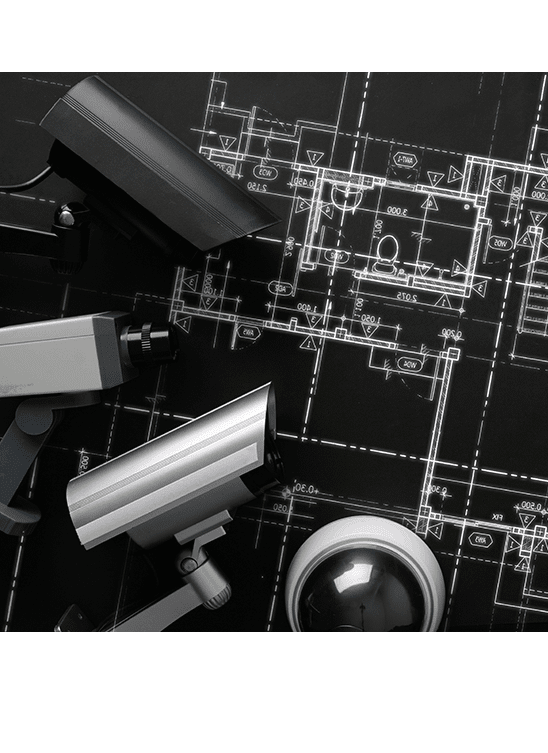
Fire can be a force that saves lives or destroys it, depending on how it is used and controlled. In certain scenarios when uncontrolled, especially in the home and business, it can be a force that swiftly wreaks havoc. As such, its safe use also requires reliable mechanisms to help protect lives and properties. Fire alarm and life safety systems, acting as vigilant guardians, are an excellent way to safeguard against the destructive nature of fire. In addition, they also provide early warning systems against smoke, carbon monoxide leaks, etc. Without a doubt, these systems are integral to the infrastructure of homes and businesses today. In this blog post, we’ll outline five pivotal ways these systems help keep lives and properties safe.
In the following sections, we’ll begin by exploring what fire alarm and life safety systems are. We will then go on to discuss available types of fire alarm systems today.
What Are Fire Alarm and Life Safety Systems?
Fire Alarm and Life Safety Systems are primarily designed to detect and alert occupants to fire, smoke, or other emergencies. They are often integrated into broader life safety systems, such as alarm monitoring solutions, to provide a comprehensive emergency response solution.
One example of such comprehensive life safety systems are central monitoring stations at fire houses and police stations. This could also include business monitored solutions that provide almost immediate emergency services when an alarm is triggered. At our company, Access Security Solutions LLC, we provide both Alarm Monitoring and Fire Alarm and Life Safety solutions to our customers. To find out more about these and our other services, kindly request a free service quote here.
Types of Fire Alarm Systems
Fire alarm systems tend to vary to suit the specific needs of their users and environments. However, the most common types of fire alarm systems include:
- Conventional Fire Alarm Systems: These are generally traditional systems that make use of zoning to detect issues and trigger alarms. They are commonly used in smaller buildings.
- Addressable Fire Alarm Systems: In this case, each device has a unique address that is used for precise identification in larger building layouts.
- Analog Fire Alarm Systems: This type of fire alarm system provides continuous monitoring of a home or business, and if most effective where early detection and environment data is vital.
- Wireless Fire Alarm Systems: These make use of wireless technology for communication between devices and are generally easier to install, as they don’t require extensive cabling.
- Manual Fire Alarm Systems: These include manually activated pull stations and call points that trigger a fire alarm when used. They generally work in conjunction with other automated systems to provide a robust fire alarm and life safety solution.
- Smoke Detection Systems: This is a device that actively measures smoke particles in the air and triggers an alarm when the threshold limit is exceeded.
When choosing a fire alarm system, consideration should be given to issues such as property size and layout, occupancy level, local regulations, and other specific safety requirements. In addition, regular maintenance and testing of these systems helps ensure their reliable, continued use.
Here are some related posts on fire alarm systems that we believe you’ll find helpful:
1. Benefits of Residential Fire Alarm Systems and Helpful FAQs
2. Five Causes of False Security Alarms and How to Prevent Them
3. Monitored vs. Unmonitored Alarm Systems: Differences and Benefits
Five Ways Fire Alarm and Life Safety Systems Help Protect You
In this section, we will share five ways these systems can help keep you, your family and property safe:
- By Early Detection of Fire and Smoke: Fire alarm systems use smoke detectors, heat sensors and other alarm monitoring solutions to detect early signs of a fire. In the event of an actual fire or other life-threatening situation, early detection is crucial to initiate a counter-response, minimize damage and prevent loss of life.
- Immediate Alerts and Notifications: Another way fire alarms and life safety systems help keep one safe is by triggering audible alarms and visual signals. These alerts immediately notify occupants of possible danger, allowing for safe evacuation and preventative measures.
- Rapid Emergency Response: Most modern fire alarm systems are usually connected to public or private service monitoring systems. In the event of an alarm, these solutions automatically notify local emergency services, triggering a safety response.
- Evacuation Guidance: Life safety systems often include emergency lighting and illuminated exit signs. These can be very useful in the event of a power failure, helping guide occupants through safe exits to outside areas.
- Through Clear Communication during Emergencies: Some advanced life safety systems include voice evacuation capabilities. This allows for clear and specific communication, guiding occupants on evacuation procedures and providing information about the situation.
These features collectively provide users of Fire Alarm and Life Safety Systems with a comprehensive approach to fire safety. In addition, these benefits significantly increase the chances of protecting lives and limiting property damage in the event of a fire or emergency.
In conclusion, the seamless integration of fire and intruder alarm systems establishes a robust foundation for safeguarding lives and property. To keep your home or business safe against unforeseen emergencies, consider the adoption of these advanced safety measures. Don’t wait until an emergency occurs. Take proactive step towards securing your family, home, and business by contacting us about our fire alarms, burglar alarms and other life safety solutions. To get started with the installation or management of your home or business security cameras, contact us here, over the phone at 510-356-0083 or on Facebook, Twitter or LinkedIn today.
Invest in a reliable fire alarm system today and ensure the well-being of your loved ones and the security of your valuable assets. Your peace of mind is just a phone call or click away.
